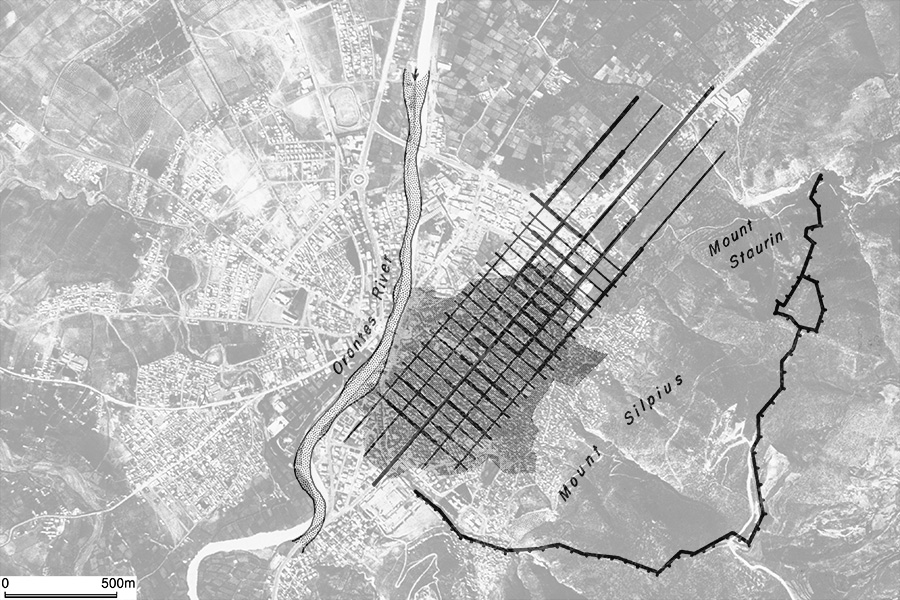
 |
| Reconstructed ancient city plan of Antioch on the Orontes by J. Sauvaget (1934) based on the existing street pattern. He specified the size of a city block as 112 by 57 meters. The plan is overlaid on the CORONA satellite photograph taken on March 21, 1968. |
Furthermore, Antiocheia is the metropolis of Syria; and here was established the royal residence for the rulers of the country. And it does not fall much short, either in power or in size, of Seleucia on the Tigris or Alexandria in Aegypt. Nicator also settled here the descendants of Triptolemus, whom I mentioned a little before. And it is on this account that the Antiocheians worship him as a hero and celebrate a festival in his honour on Mt. Casius in the neighbourhood of Seleucia.
— Strabo, Geography, 16.2.5.
Then Barnabas went to Tarsus to look for Saul. When he found him, he took him to Antioch, and for a whole year the two met with the people of the church and taught a large group. It was at Antioch that the believers were first called Christians.
— The Acts of the Apostles, 11.25.
However, it is now time to give and account of its size and its site. There is no other city in the world of equal size, I think, which possesses such a fine situation. Starting in the east, it goes in a straight line to the west, with a high pair of colonnades all its length. The colonnades are separated by an uncovered street, paved all the way across. Their length, as they extend onwards, is so great that merely to smooth the masonry of such an area would need much labour. If you try to walk from beginning to end, it is a hard job, and you would need the help of a carriage. It is level and continuous all the way, uninterrupted by water courses of steep hills or any other kind of inconvenience.
— Libanius, Oration 11 The Antiochikos, 196.
Antioch on the Orontes was the capital of the Seleucid Empire, and one of the major cities of the Hellenistic world along with Alexandria in Egypt. In the Roman times, it was the capital of the Syrian Province, and emperors stayed there many times. Clear water supplied from Daphne via an aqueduct enhanced habitability of the city. Like many examples of the Hellenistic colonial cities, Antioch had a straight main street, and plan of rectangular grid pattern of streets and city blocks. J. Sauvaget (1934) studied the generalization of Syria’s Hellenistic city plans. According his study, cities such as Damascus and Aleppo also were re-developed in this way of city planning.